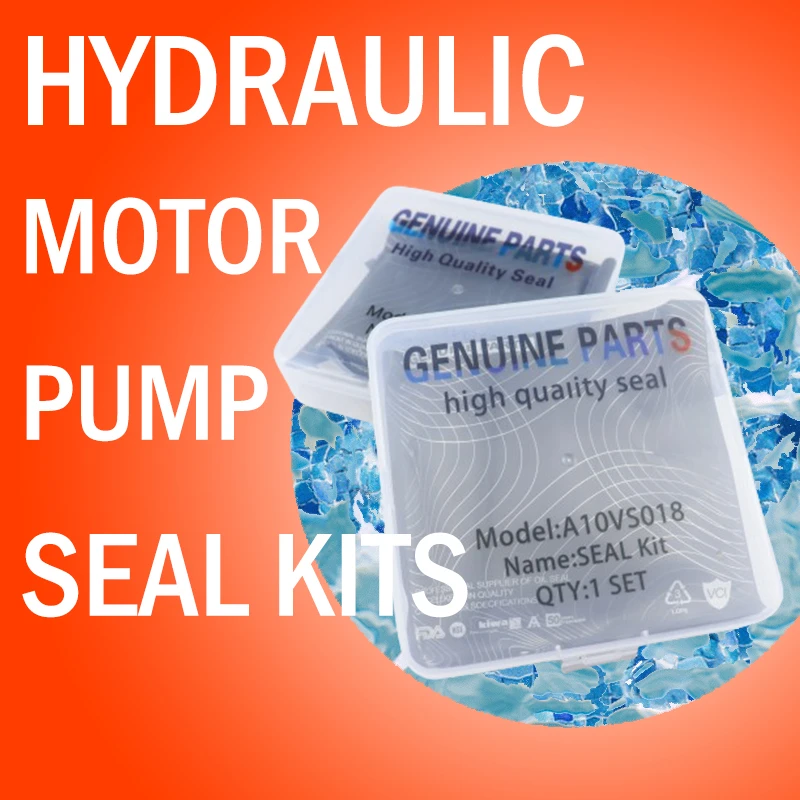Oct . 17, 2024 15:11 Back to list
Gear Pump Seal Kit Replacement for Enhanced Performance and Durability in Machinery Systems
Understanding Gear Pump Seal Kits Essential Components for Optimal Performance
Gear pumps are widely used in various industrial applications due to their ability to move fluids efficiently. These pumps rely on a combination of gears and seals to create a reliable mechanism for fluid transfer. Among the critical components of a gear pump are the seals, which play a vital role in maintaining operational efficiency and preventing leaks. In this article, we will delve into the importance of seal kits for gear pumps, their components, and maintenance tips to ensure optimal performance.
The Role of Seals in Gear Pumps
Seals are essential for preventing fluid leakage from the pump casing, ensuring that the desired flow rate is maintained while preventing contamination of the fluid being pumped. In gear pumps, seals are typically located at the ends of the pump and around the rotating shafts. Without effective seals, fluid can escape, leading to reduced efficiency, environmental hazards, and increased operational costs.
Components of Gear Pump Seal Kits
A typical gear pump seal kit comprises various components designed to replace worn or damaged seals. Here are the primary elements commonly found in a gear pump seal kit
1. O-Rings These are circular loops made from elastomeric materials such as rubber or silicone. They are used to create a tight seal between two surfaces, preventing fluid leakage.
2. Gaskets Gaskets serve a similar purpose to O-rings but are usually used between flanged connections and provide a larger sealing surface. They are typically made from materials like cork, paper, or rubber.
3. Lip Seals These seals have a flexible lip that presses against a shaft, creating a barrier to prevent fluid from escaping. They are essential in gear pumps where the shaft rotates.
5. Seal Retainers These components hold the seals in place, ensuring that they do not move out of position during pump operation.
gear pump seal kit

Importance of Regular Maintenance
Regular maintenance of gear pumps is crucial to ensure their longevity and efficiency. An important aspect of this maintenance is the periodic replacement of seals. Over time, seals can become hard, brittle, or damaged due to operating conditions such as temperature fluctuations, chemical exposure, and pressure changes. When seals wear out, they can lead to fluid leaks that not only result in loss of material but also pose safety hazards and environmental concerns.
To maintain optimal performance, it is advisable to follow these maintenance tips
1. Regular Inspections Conduct routine inspections of your gear pump and associated seal kits. Look for signs of wear, such as discoloration, cracks, or deformation in the seals.
2. Replacement Schedule Establish a replacement schedule based on the manufacturer's recommendations and the specific operational conditions of your gear pump. This can vary based on the type of fluid being pumped and the application's demands.
3. Quality Components Always opt for high-quality replacement seals and components. Using genuine or well-manufactured parts ensures better compatibility and performance.
4. Proper Installation Follow installation guidelines meticulously to prevent damage to the seals during the setup. Improper installation can lead to early failure of the seals.
5. Monitor Performance Pay close attention to the performance of the gear pump. Any sudden changes in pressure or flow rate can indicate seal failure and should be investigated promptly.
Conclusion
Gear pump seal kits are essential for maintaining the functionality and efficiency of gear pumps in various applications. Understanding the components of these kits, the significance of regular maintenance, and the need for timely replacements can help ensure optimal operational performance. By caring for and replacing seals properly, businesses can reduce costs, enhance safety, and extend the lifespan of their gear pumps, leading to more efficient operations overall. Investing time and resources in maintaining seals is a small but critical step towards ensuring reliability in fluid handling systems.
-
The Trans-formative Journey of Wheel Hub Oil Seals
NewsJun.06,2025
-
Graphene-Enhanced Oil Seals: Revolutionizing High-Pressure Oil Sealing
NewsJun.06,2025
-
Future of Hydraulic Sealing: Advanced Intelligent TCN Oil Seals
NewsJun.06,2025
-
Don’t Let a Broken TCV Oil Seal Ruin Your Day
NewsJun.06,2025
-
Bio-Inspired Dust Seals for Better Sealing Performance
NewsJun.06,2025
-
Biodegradable and Sustainable Hydraulic Seal Materials
NewsJun.06,2025
-
Top Oil Seal Solutions for Your Industrial Needs
NewsMay.22,2025
Products categories
















